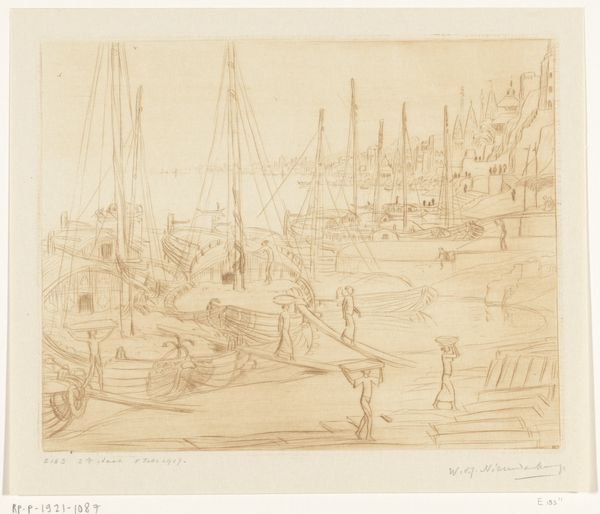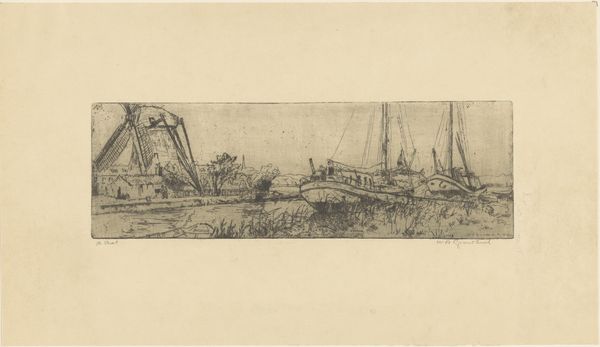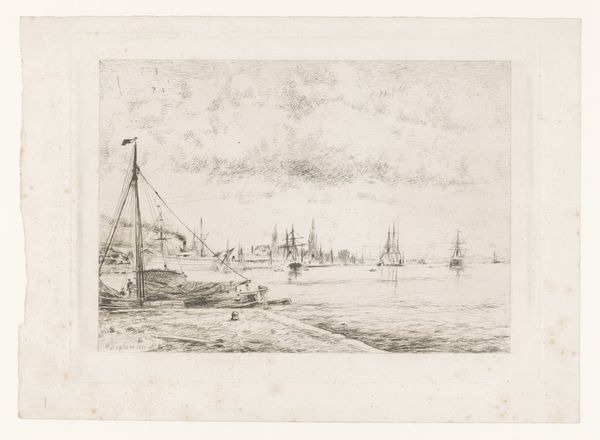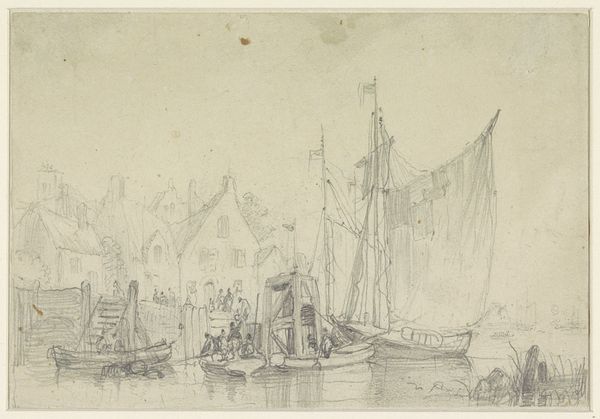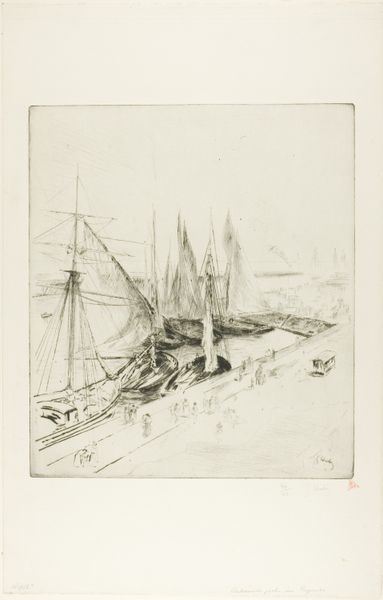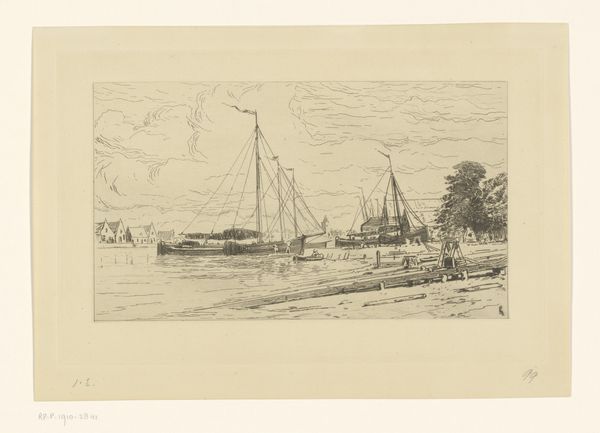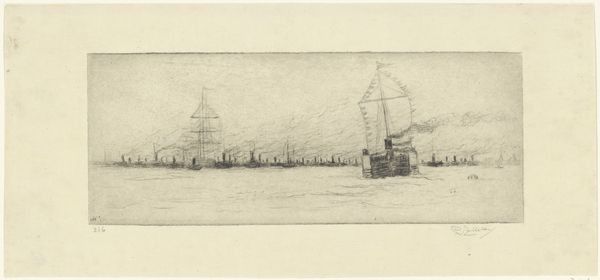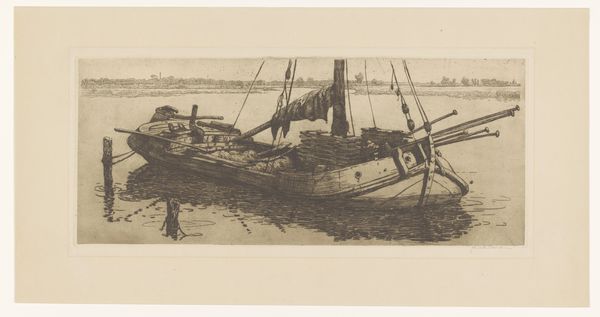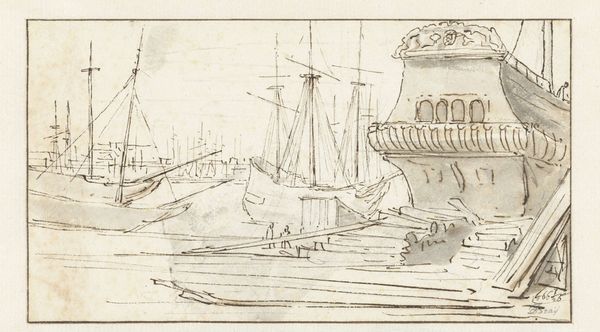
Afgemeerde schepen aan de oever van de Ganges in Benares 1914 - 1915
0:00
0:00
drawing, print, etching, paper, ink
#
drawing
# print
#
etching
#
asian-art
#
landscape
#
paper
#
ink
#
orientalism
#
realism
Dimensions: height 150 mm, width 200 mm
Copyright: Rijks Museum: Open Domain
Curator: I’m immediately struck by the scene's almost monochromatic stillness, the intricate linework suggesting heat, labor, and perhaps a subtle tension in the air. Editor: Today, we're examining "Afgemeerde schepen aan de oever van de Ganges in Benares," a work by Wijnand Otto Jan Nieuwenkamp created between 1914 and 1915. It’s an etching on paper, employing both drawing and print techniques. Curator: The Ganges… Benares. There's definitely an Orientalist gaze here, but also a dedication to portraying everyday life. It feels documentary but with that undeniable layer of colonial perception. Editor: Exactly. Nieuwenkamp traveled extensively, particularly in Southeast Asia, and his work engages with the dynamics of cultural representation and the portrayal of non-Western subjects. This piece, with its realistic style, invites questions about the relationship between the artist and his subject matter. We have figures carrying what appear to be heavy loads on their heads, framed by boats, their bodies rendered with the same careful detail as the boats. It's a juxtaposition. Curator: It's like, where is the human within the broader landscape? Are the people, their labor, just another detail in the overall picturesque view? The lines of those boats are just beautiful, but I can't help feeling that those figures and their bodies need our respect. Editor: That friction is, I think, exactly the point where we need to linger. This artwork lets us consider colonial-era travel, representation, and the way laboring bodies become intertwined with idealized landscape. The almost sepia-toned etching— the shades remind you of something historical. Curator: I hadn't thought of the sepia, and that historical wash is powerful. It highlights the importance of contextualising images, making it very relevant now to challenge conventional interpretations of history. Editor: Definitely a layered piece then, that demands reflection, I think. Curator: Absolutely. And reminds us of the constant need to examine the perspectives that shape our view.
Comments
No comments
Be the first to comment and join the conversation on the ultimate creative platform.
